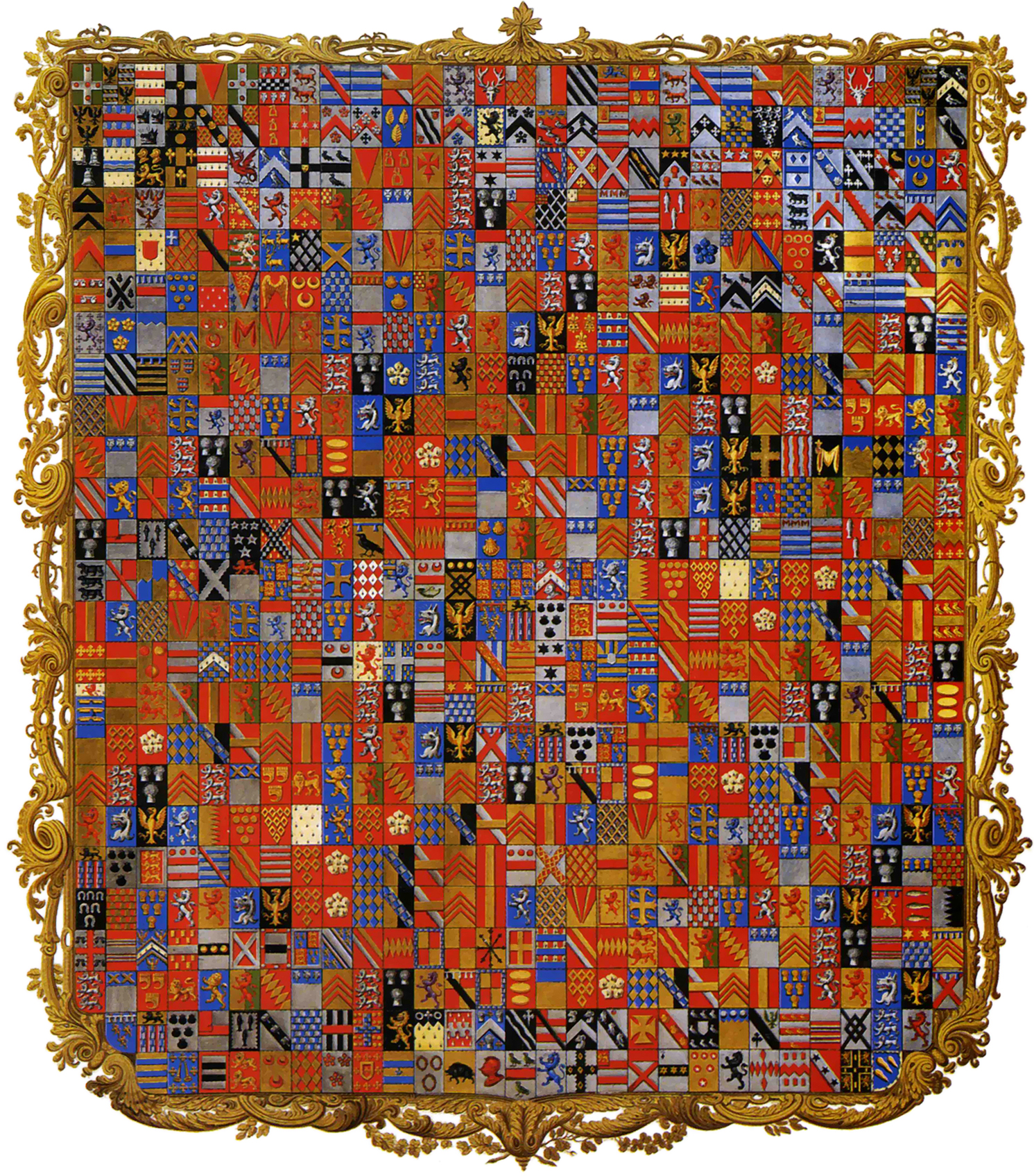Images of heraldry decorate many
places and things. For many they hope to
link to their ancestry through the coats of arms they find for their
families. However, most people don’t
explore what these pretty pictures mean, or for that matter the history behind
them.
Where to start in heraldic education can be very challenging. Do you start with the picture, or the
words? For this handout we are going to
start with the picture and work out way through the various parts of a
display. After that, I will walk you
through the words that describe what you are seeing when you look at a heraldic
display.
Different groups, and countries,
have different words for the parts of a display. There are also more parts than what are shown
in the diagram here. However, these are
the most commonly seen and used parts.
They are:
·
Crest:
An inheritable device on top of the helm.
·
Mantling
(Lambrequin): It is unknown why, or then, this practice started but there are
theories. However, it is fabric coming off the achievement usually in the main
colors represented on the arms. There
can be variations depending on the time the achievement was created and the
rank of the person bearing these arms.
·
Coronet
(crown): On top of a helm these are to show the rank of the person’s arms
depicted below. There are other types of
crowns/coronets that can appear on the shield itself or even below it and are
not associated with a royal title.
·
Shield:
Where the heraldry is displayed.
·
Helmet:
This is where the crest was attached in medieval times and has become an
essential part of the achievement. Some
countries have rules on who can display what type, or even color, of helm above
a shield.
·
Supporter(s): Figure or figures that “hold up” the
shield. They could be anything, but
usually have a symbolic representation of the family, the area, or even
representing awards. Supporters were
used more widely, and often, in the 15-16th centuries but have more
strict guidelines today.
·
Charge
(ordinary): Any item depicted on the shield.
·
Compartment:
The base of the achievement where the supporters stand or the shield point
sits.
·
Motto:
Usually written on a scroll at the base of the shield. Traditionally only men had a motto but
modernly women’s shields have them as well.
The words may be the family saying or war cry (usually depicted above)
As
with everything else, even the type of shield used in the achievement can tell
you a lot about where and when the shield was created. This is particularly important when you find
historical records depicting a coat of arms.
The first glance can give you hints at the time it was created and the
place the person was from. No clue
should be left researched.
Most
common shield shapes are those from France and England. For example, the ancient heater
type shield
or the 16th century Tudor Arch.
Lozenges are reserved for women, which will also
appear hanging from a
ribbon with no helmet on top of them. As
women, they are not seen as
warriors after all.
The
shield itself may be divided in a number of ways. These divisions add variety, and
sometimes
style, to the shields. Many use a border
around the shield to set off how someone is
related to the holder of the
original arms instead of a cadency mark.
Resources:
•
A
Guide to Basic Balzonry education.heraldry.ca/BLAZONRY_GUIDE_10.pdf
•
The
Institute of Heraldry www.tioh.hqda.pentagon.mil/
•
The
American Heraldry Society www.americanheraldry.org/
•
The
College of Arms Foundations, Inc. www.coaf.us/heraldus.html
•
A
Complete Guide to Heraldry
by A.C. Fox-Davies
•
An
Heraldic Alphabet by J.P. Brooke-Little
•
The
Complete Book of Heraldry by Stephen Slater

No comments:
Post a Comment